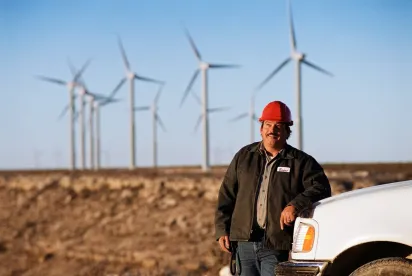Recently introduced Illinois Senate Bill 3263 (the Bill), entitled “The Wind Energy Facilities Construction and Deconstruction Act,” would strip Illinois counties of the power to regulate commercial wind energy facilities and vest that power exclusively in the Illinois Department of Agriculture (DOA). The Bill would apply to “commercial wind energy facilities” (i.e., any wind energy conversion facility operated on agricultural land with a nameplate capacity of ≥ 500 kW) not constructed before the Bill’s date of enactment.
The Bill obligates wind energy facility operators to enter into an “agricultural impact mitigation agreement” with the DOA, which would address construction and deconstruction procedures, indemnification of landowners, monitoring and remediation. The Bill also establishes procedures for public hearings triggered by the operator’s notice of intent to construct a wind energy facility. In addition to the mitigation agreement, at least 180 days before the start of construction, the operator must provide the DOA with a deconstruction plan prepared by an independent third party, detailing the cost of deconstruction per turbine and a reclamation bond acceptable to the DOA.
To win site approval, the operator must, in addition to having in place the mitigation agreement, deconstruction study and reclamation bond, (A) comply with Illinois Pollution Control Board noise standards, (B) minimize and mitigate signal interference and (C) be located and operated to protect the public health, safety and welfare.
According to the several counties that have already objected, the Bill aims to fix something that is not broken. Illinois currently ranks fourth nationally in installed wind energy capacity, so the lack of uniform siting controls does not appear to be hampering development, nor have counties without siting ordinances been overrun by wind energy developments. Many counties have adopted versions of model wind energy ordinance. It is not clear whether the Bill’s public hearing process will result in at least the same degree of protection of local infrastructure that has often been developed under the existing county siting regime. Finally, while the DOA would likely have the expertise to deal with soil impact mitigation, the DOA probably has no other expertise necessary for assessing wind energy siting issues.
The Bill has been referred to the Assignments Committee. At least two previous attempts to centralize wind energy facility siting and permitting have failed in the General Assembly.



 />i
/>i

